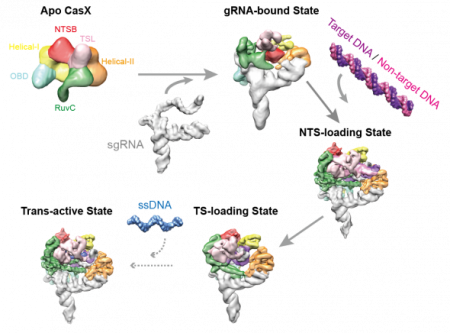
February 8, 2019 – CRISPR is the tool that employs special proteins to edit genetic information by cutting and splicing DNA. When it first arrived on the scene1back in 2012 we learned about its companion protein Cas9, which is used like a scissor and paste tool for removing and replacing bad pieces of DNA code. CRISPR/Cas9 was seen as a tool to revolutionize the treatment of genetic defects and genetically-caused diseases.
Because Cas9 wasn’t always effective, researchers looked for an alternative protein to work with CRISPR and discovered Cas12 which was distinct enough for use on specific DNA sequences, particularly associated with the immune system.
The next evolution in the CRISPR arsenal is CasX, a protein whose molecular makeup and shape bears no resemblance to Cas9. It is seen as a significant step forward in gene therapy tools, and is being described as the Swiss army knife for slicing and dicing DNA. CasX is a smaller protein than either Cas9 or 12 and its versatility is demonstrated by its ability to assume different shapes making it potentially a better genetic engineering and gene editing tool.
Jennifer Doudna, who first published the seminal work on CRISPR/Cas9, is co-discoverer along with colleague, Jill Banfield, of CasX. Describing the protein as nimble refers to its size, 40% smaller than other Cas proteins. Why does that matter? Because when you are trying to edit genetic material, you want your tool to be as small as possible so that it can be inserted into a target cell or organ easily.
Another advantage of CasX is that it is derived from a bacterium that is not found in humans. That is not the case for Cas9 and is one of the reasons that in some clinical trials, patients have had negative immune reactions to CRISPR therapy employing the latter protein. Something else about CasX makes it an attractive alternative to its predecessors. It appears to have learned on its own to cut both strands of DNA’s double helix.
The plan is to engineer CasX to make it even more efficient as a gene editor for a range of therapeutic applications. And when you consider that 5% of all babies born in this world suffer from a genetic disorder, CRISPR/CasX may prove to be the penultimate tool for ending these afflictions.
The latest research on CasX was published this week in the journal Nature.









